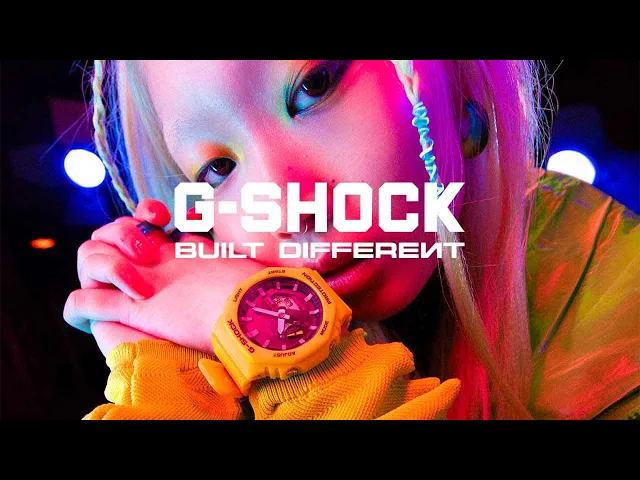
BUILT DIFFERENT
December 2022
Live Preview
Role: Cultural Strategy Lead
Challenge: How to transform a functional timepiece into a cultural signifier for a generation that doesn't need watches
The Cultural Tension
Despite years of being the coolest watch in the world, G-Shock had lost touch with youth audiences. Sucessive marketing leads had focused on the features of the watches: their toughness on the one hand, and their digital capabilities on the other. This had lead them into a creative cul-de-sac that appealed to adventuring middle-aged men, rather than the next generation of watch wearers.
Unsurprisingly, the rise of mobile technology had scared the brand: why on earth would the most connected generation in the world need a watch? The research reinforced the brands big challenges:
1. category decline in general (driven by the vulgarity of luxury watches and functionality supplied by other devices)
2. Low brand awareness in particular (driven by the disconnection with youth culture and no clear role for the brand or product.
I uncovered a fascinating paradox: while Gen Z rejects traditional timepieces as functional objects, they're deeply invested in objects as cultural signifiers:
"I don't wear a watch because I see watches more as a status symbol. If I want to check the time I can just look at my phone. Status isn't something I'm overly concerned with." - Andrew, 19
Through extensive ethnographic research, we discovered that Gen Z moves fluidly between past and future, using objects not as tools but as markers of identity and belonging.
The Research Approach
Our investigation employed multiple methodologies across three distinct audience segments: Pop Culture Mavens, Drop Watchers, and Outdoor Adventurers. A key insight emerged around the transformation of value:
"These sunglasses; I have them in every colour and they're pretty much the only sunglasses I wear... I like that there's a kind of uniqueness within the brand; this pair was a limited run and you could only buy them for a few months so you don't see them around. If there's an ability for you to express a unique style, I think that's really important." - Lewis, 24
Cultural Pattern Recognition
Cross-referencing behavioral data revealed three fundamental shifts in how Gen Z approaches accessories:
From Function to Identity:
"Outside of education and career, I'm a dancer. That's been my core; if someone asks me 'who are you' I will always say 'I'm a dancer'. I'm a big trainer collector and that literally started because of dance." - Morgan, 22From Status to Expression:
"It sounds like I have a huge array of luxury clothing that costs a fortune. I don't. After staples, I have invested in a few transitional pieces by amazing brands which stand the test of time." - Lewis, 24From Ownership to Investment:
"I love basketball so I collect rookie cards; I buy young players in basketball or baseball who I love now and who I think are going to be good in future, not just for me but as an investment later." - Charlie, 27
Value Framework
The research revealed a crucial shift in how Gen Z thinks about durability and value:
"The thing that actually drives my buying patterns the most, if I'm being totally honest here, is the quality of the object. Quality and durability go hand in hand. How soon after someone buys something is that product going to be in a landfill?" - Lewis, 24
Cultural Authentication
Gen Z's skepticism toward brand authenticity emerged as a critical consideration:
"I mistrust most brands; my mum works in PR so I know what companies will do to make us feel that they're working a certain way. I have a filter, where it's like 'OK, I've seen what you're showing me but I'm not going to believe that it's the case.'" - Andrew, 19
Strategic Translation
This understanding crystallized into a clear brand proposition: "Built Different" This resonates particularly strongly with Gen Z's approach to collaborations:
"Collabs? A thousand times yes. If I see someone who I relate to, whether that's a music artist or a sportsman, if I see them championing the brand, I will be much more likely to buy their products. When I make an Instagram about it, I want to be able to share the fact that this is the one that they made and own." - Andrew, 19
The strategy operates across four key dimensions:
Culture: Authentic presence in Gen Z spaces
Context: Human-centered storytelling
Community: Facilitating belonging
Collectability: Emphasizing durability and value retention





